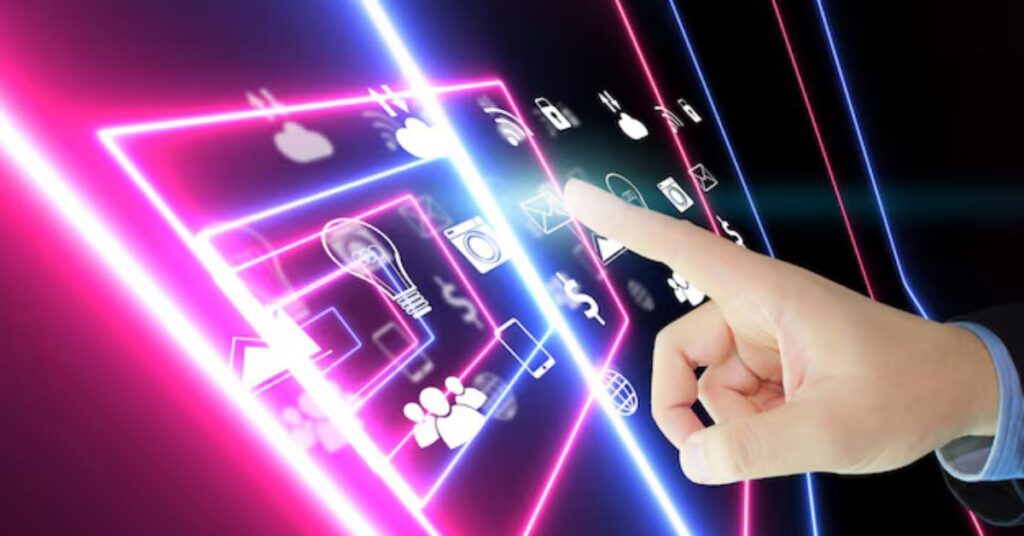INTRODUCTION:
Gamification has emerged as a powerful strategy for enhancing customer engagement across various industries. By integrating game-like elements into non-gaming environments, businesses can increase user participation, boost brand loyalty, and create more interactive experiences. Gamification taps into basic human psychology—our desire for competition, achievement, and rewards—making it an effective way to motivate and retain customers.
From loyalty programs and interactive apps to blockchain-based rewards and NFT incentives, businesses are continuously finding innovative ways to incorporate gamification into their marketing strategies. The digital transformation, especially within Web3 and decentralized technologies, has further expanded the potential of gamification. By leveraging engagement-driven mechanics, companies can create immersive customer experiences that not only entertain but also provide real-world value.
THE PSYCHOLOGY BEHIND GAMIFICATION AND CUSTOMER ENGAGEMENT:
How Gamification Triggers Human Motivation
Gamification is effective because it aligns with intrinsic and extrinsic motivational factors that drive human behavior. People naturally seek achievements, social recognition, and rewards—principles that gamification integrates into user experiences.
- Intrinsic motivation: Gamification fosters engagement by making experiences more enjoyable and interactive. Users participate in activities because they find them fun, not just because of external rewards.
- Extrinsic motivation: Points, badges, leaderboards, and prizes encourage users to continue engaging with a brand in exchange for tangible benefits.
By leveraging these psychological drivers, brands can create engaging experiences that keep customers returning.
The Role of Dopamine in Customer Engagement
When people achieve something in a gamified system—whether it’s earning points, leveling up, or unlocking rewards—the brain releases dopamine, a neurotransmitter associated with pleasure and motivation. This creates a cycle where customers feel rewarded for interacting with a brand and are encouraged to continue participating.
Companies that integrate gamification into their marketing strategies can stimulate this reward system, increasing engagement and customer satisfaction over time.
HOW BRANDS ARE LEVERAGING GAMIFICATION IN DIGITAL MARKETING:
Loyalty Programs and Reward-Based Engagement
Loyalty programs are one of the most common applications of gamification in marketing. Businesses use point systems, tiered memberships, and challenges to encourage repeat purchases and customer interaction.
- Point-based systems: Customers earn points for making purchases, referring friends, or engaging with content, which can be redeemed for discounts or perks.
- Tiered rewards: Users unlock new levels with greater benefits as they engage more with a brand.
- Exclusive access: Gamified loyalty programs provide access to VIP events, early product releases, or limited-edition merchandise.
These elements make customers feel valued and incentivized to stay engaged with the brand long-term.
Interactive Content and Social Media Challenges
Gamified marketing campaigns often include interactive content and challenges that encourage user participation. Social media platforms are an ideal space for gamification, as they allow brands to reach large audiences and encourage engagement through fun and rewarding experiences.
- Hashtag challenges: Users participate in brand-related challenges, sharing their experiences on social media to earn rewards or recognition.
- Quizzes and contests: Customers engage with interactive quizzes, games, or giveaways that offer prizes for participation.
- Augmented reality (AR) experiences: Brands like Snapchat and Instagram use AR filters and gamified lenses to encourage user-generated content.
By incorporating gamification into digital marketing, brands can create engaging and shareable content that strengthens customer relationships.
GAMIFICATION IN WEB3 AND DECENTRALIZED TECHNOLOGIES:
How Blockchain and NFTs Are Enhancing Gamified Experiences
With the rise of Web3, gamification has taken on new dimensions through blockchain technology and non-fungible tokens (NFTs). These innovations allow brands to offer real, tradeable digital assets as rewards for participation, creating new opportunities for customer engagement.
- NFT-based loyalty programs: Users earn exclusive digital collectibles for completing brand-related challenges or participating in events.
- Play-to-earn (P2E) models: Blockchain games reward users with crypto tokens or NFTs that have real-world value.
- Decentralized voting and governance: Brands integrate gamified governance mechanisms where users can earn voting power in decentralized organizations based on participation.
By utilizing blockchain-powered gamification, companies can provide customers with tangible, tradable incentives that go beyond traditional reward systems.
How Web3 Communities Are Transforming Customer Engagement
Web3 communities are built on decentralization, meaning users actively contribute to and shape the experiences of their favorite brands. Gamification plays a key role in fostering community-driven engagement, ensuring participants feel valued and involved.
- Token-based incentives: Brands reward users with crypto tokens for their engagement, such as sharing content, inviting new members, or participating in governance.
- Community-driven competitions: Web3 projects hold leaderboard competitions where top contributors receive exclusive benefits.
- Decentralized storytelling: Customers co-create narratives by participating in gamified decision-making systems.
The integration of Web3 gamification ensures that engagement is interactive, rewarding, and community-centric, strengthening brand loyalty in the process.
THE FUTURE OF GAMIFICATION IN CUSTOMER ENGAGEMENT STRATEGIES
Emerging Technologies Shaping the Next Generation of Gamification
The future of gamification will be driven by emerging technologies that enhance interactivity and immersion. Advancements in artificial intelligence (AI), augmented reality (AR), and virtual reality (VR) will create more personalized and engaging experiences.
- AI-driven personalization: Machine learning will analyze customer behavior to tailor gamified experiences for individual users.
- Metaverse integration: Brands will build gamified virtual worlds where users can interact with products, services, and each other in immersive environments.
- Cross-platform gamification: Seamless integration across mobile apps, websites, and decentralized platforms will create unified brand experiences.
As technology evolves, brands will have greater opportunities to innovate their gamification strategies and keep customers engaged in dynamic and meaningful ways.
HOW BRANDS CAN IMPLEMENT GAMIFICATION SUCCESSFULLY
Best Practices for Designing Effective Gamification Campaigns
For gamification to be successful, brands must design experiences that are engaging, rewarding, and aligned with their customer base. A well-executed gamification strategy follows key best practices to ensure long-term impact.
- Keep it simple: Overcomplicated systems can overwhelm users, so intuitive and easy-to-understand mechanics are essential.
- Offer meaningful rewards: Users are more likely to engage if rewards provide real value, such as discounts, exclusive access, or digital assets.
- Encourage competition and collaboration: Leaderboards, challenges, and community-based incentives foster engagement and social interaction.
Common Pitfalls to Avoid in Gamification Strategies
Despite its potential, gamification can fail if not implemented correctly. Some of the most common mistakes include:
- Lack of long-term strategy: Brands that treat gamification as a one-time campaign rather than an ongoing engagement tool may see declining participation.
- Neglecting user feedback: Gamification should evolve based on user preferences, behaviors, and feedback to stay relevant.
- Over-reliance on rewards: While incentives are important, gamification should also be intrinsically engaging rather than purely transactional.
By following best practices and avoiding these pitfalls, brands can create sustainable gamification strategies that drive long-term customer loyalty and interaction. Brands can also partner with a kol web3 marketing agency to create a well-executed gamification strategy
CONCLUSION:
Gamification is transforming customer engagement by making interactions more interactive, rewarding, and enjoyable. Whether through loyalty programs, interactive content, or Web3 innovations, brands are finding new ways to motivate and retain users. The rise of blockchain technology and NFTs has further expanded gamification’s potential, enabling decentralized reward systems that offer real-world value.
With the growing importance of marketing agency partnerships, brands can amplify their gamified strategies and drive higher engagement. As digital experiences continue to evolve, companies that embrace gamification will remain at the forefront of customer engagement, fostering stronger relationships and long-term brand loyalty.







